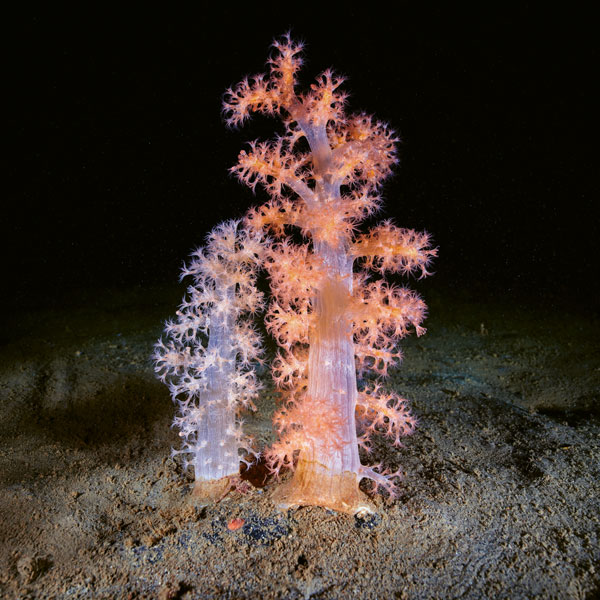SCIENCE PRIZES
Make way for the best of the best!
Sometimes they’ll make you laugh, and sometimes they’re not that important – but sometimes they’re really serious. There’s a whole panoply of science prizes to inspire and attract researchers, whether they’re still finishing their studies or have already retired. We offer an (incomplete) overview.

The ceremony’s the thing
“Welcome!”, cry the two professors in charge of opening the 29th First Annual Ig Nobel Prize Ceremony in 2019. Paper planes are thrown twice during the ceremony, and a young professor with an Asian conical hat has the job of sweeping the planes from the stage.
That evening was the last Ig Nobel Prize ceremony before the Covid-19 pandemic. This year, however, it’s coming round again. These prizes honour work that ‘first makes you laugh and then makes you think’. The physics prize, for example, went in 2019 to researchers who discovered how and why wombats produce cube-shaped faeces. Their prize was a homemade sculpture along with a crumpled certificate, ten trillion Zimbabwean dollars and handshakes with three real Nobel Laureates who sat smiling on stage throughout.
Even the real Nobel ceremony is a serious object of parody at the Ig Nobels. “The ritual aspect of the ceremony is extremely important with research prizes” says Jana Gallus, a professor of economics at the University of California Los Angeles who has co-authored a book about prizes and awards: “And with the big prizes, the money doesn’t actually interest anyone”. What’s relevant, she says, is who’s present and the reputation of the organisation awarding the prize.

Improving your reputation after death
“The super-rich want to link their name after death to something positive that will be visible for a very long time. It’s their legacy”, says Gallus, who in her former position at the University of Zurich investigated how awarding honours and money can encourage people to achieve more. Alfred Nobel was highly concerned about how he might be remembered after he had the rare opportunity to read his own obituary in 1888. A mix-up with his recently deceased brother Ludvig was to blame, and Alfred was confronted with an unflattering account of his activities in the armaments industry. Seven years later, Nobel donated the money for the five famous prizes that carried his name successfully into the future.

Picked from the school benches
It’s about preparing the next generation: pupils are allowed to submit their final-year high-school coursework or personal project to experts. Those who reach the final of the Swiss Youth in Science contest earn the opportunity to showcase their prototype, research or work and earn a mention of their name and even sometimes a special prize that will open the door to international science events.
In the case of Julián Cancino, who won in 2005, it meant a research internship at the Max Planck Institute in Stuttgart. He then joined ETH Zurich through to doctoral level. “I’d already decided to study physics before the contest”, he says. “But I then met some folk from Uri and Ticino with whom I found a common language that revealed interest in our subject”. So, it was a meeting of enthusiastic minds. “It’s not a geek fest”, he says. “But motivation levels there do exceed the average”.

Not suitable for your CV
Not all prizes are intended to act as an incentive. For example, the German association Doctors Against Animal Experiments has created a ‘negative’ prize entitled ‘Herz aus Stein’ (‘heart of stone’) that they award each year to what they consider to be the most preposterous study involving animals. “We know that the fear of losing face can have a significant preventive effect”, says Jana Gallus. “I for one wouldn’t want to have the ‘Heart of Stone’ prize on my CV”. But when such issues take on a political hue, criticising people can sometimes lead, conversely, to a gain in reputation for those you’re criticising.
The first woman – no longer just an indignant mother
Since 1920, the most important Swiss science prize has been awarded to 115 male researchers and only three female counterparts. The first woman was the biologist Gisou van der Goot of EPFL, who was the Marcel-Benoist Laureate in 2009.
Van der Goot remained the only woman until the second was named in 2019. Here’s her story:
“The professional impact of the prize was surprisingly non-existent, I’ve never had anyone talk about it again as a hallmark of the quality of my research. Maybe being the first female eclipsed my science. That said, teachers and fellow mothers heard about my prestigious award on the radio. And the remarks suggesting I was an overly absent mother suddenly dried up. To think the impact of the prize was felt more in my family life than my academic one and that women started to be awarded it so late . . . well, it speaks volumes, though about what I’m not exactly sure”.
Promoting the right values in the world
John Maddox was for many years the editor of the scientific journal Nature, and throughout his life he led a polemical crusade against pseudoscience. The charity Sense about Science has named a prize after him, to be awarded to researchers “who stand up for science and evidence, advancing public discussion around difficult topics despite challenges or hostility”. Joel Best is a retired sociologist from the University of Delaware in Newark (USA), who several years ago published an article about how the number of prizes being awarded is rising steadily. While such prizes encourage those who earn them, he says, he also adds that they are useful to the awarding authorities. “They are happy to be able to show what is good in their world. The audience also sees its own values confirmed”.
Dubitable notoriety
It aims to “bring the world together through the power of science”. To bear this out, the International Science Council in 2021 created the ISC Awards to “celebrate excellence to advance science as a global public good”. The impact remains to be determined, as multiple ISC Awards share space on the Internet, e.g., the International Spirits Challenge, “the most authoritative, respected, and influential spirits competition in the world”.
Using your prize money for research, or to pay off your mortgage?
Although it’s generally believed that people in Switzerland don’t like to talk about money, one recipient of the Latsis Prize has agreed to speak anonymously about how they used the money it brought them:
“CHF 100,000 is a handsome sum in research. You’re free to use it however you see fit. For example, I could have used it to buy myself out of my teaching responsibilities or to hire an administrative assistant on a temporary basis. But I invested the money in a research project instead – one for which I wouldn’t otherwise have received any funding. The money was paid into an account at my university, so I didn’t have to pay any taxes. The prize-winners don’t talk about the money amongst themselves, though I know of some who’ve used it to pay off their mortgage. Personally, I think that the money ought to be channelled back into research. I never experienced any envy towards me. In fact, the prize indirectly encourages other researchers in my field when they’re deciding on their choice of methodology”.

Burst the bubble of science and scoop up one of prizes
Awarding a prize is also a means of communication. The Austrian cabaret Science Busters first took this to the meta level in 2016 by awarding one for the best science communication. Their prize was created in tribute to the late physicist Heinz Oberhummer, a member of the group, and grants a prize chest of EUR 20,000 as well as a bowl of alpaca dung. It shines light on whomsoever makes science a topic of discussion. In 2021 the trophy went to the Ig Nobel Prizes. A science communication prize for a prize for communicative science: the alpaca chases its tail.
Improving humanity
The Balzan Foundation awarded five prizes in 2023. There was a science prize, awarded for ‘High resolution images: from planetary to cosmic objects’, for example, but also an award for ‘Humanity, Peace and Fraternity among Peoples’, given to a foundation that provided emergency aid in the wake of disasters in Italy and Latin America. This latter prize naturally sounds more reminiscent of the Nobel Peace Prize.
Just how two such prizes hang together is a matter of debate, for while much science is committed to humanitarian ideals, science and research also promote national economic interests including the arms industry. Stéphanie Lagoutte and Danielle Soskin, sometime employees of the Danish Institute for Human Rights, write that the role of research and the academy in human rights “is not as self-evident as the role played by other actors such as government, parliament, courts, law enforcement agencies, media or NGOs”. Nor is the humanitarian commitment quite so clear-cut when it comes to the men who set up the big prizes. It’s hardly surprising that the founders of the prizes for peace and humanity weren’t from academia themselves. Alfred Nobel was an industrialist who invented dynamite, while Eugenio Balzan was the managing director and co-owner of the Milanese daily newspaper Corriere della Sera.
Solving the big problems brings fame
There are seven really big problems in science. There’s Riemann’s hypothesis on prime numbers, for example, which was already considered a fundamental mathematical problem over 100 years ago. The Clay Mathematics Institute in Cambridge (USA) has offered a million dollars to whomsoever solves one of these problems. In contrast to many prizes, here the criteria that you have to fulfil have been clearly defined in advance.
Such a public offer can be effective – often even more effective than the actual amount of money being offered, according to Jana Gallus. “No one talks about bonus payments when they’re at a bar. But the award itself can get big media coverage”. The case of the Russian mathematician Grigori Perelman seems to confirm this. In 2002 and 2003, he published a proof of the 200-year-old Poincaré conjecture on N-dimensional spheres, but turned down the prize money he could have won. He was already ensured the attention of the media.

A fillip for doctoral students
In the main conference hall, the big professors are presenting their innovations and breakthrough ideas in their keynote speeches, while the doctoral students are lined up in the corridor outside with their posters summarising their more or less successful research findings. The best of the latter group receive a certificate. “I don’t think that poster prizes are belittling”, says the sociologist Joel Best. “It’s a way for the awardees to stand out. Most prizes are a pleasant experience”.
Illustrations: Irina Feller




